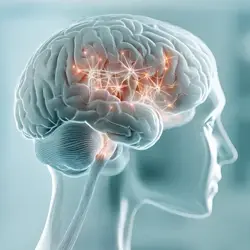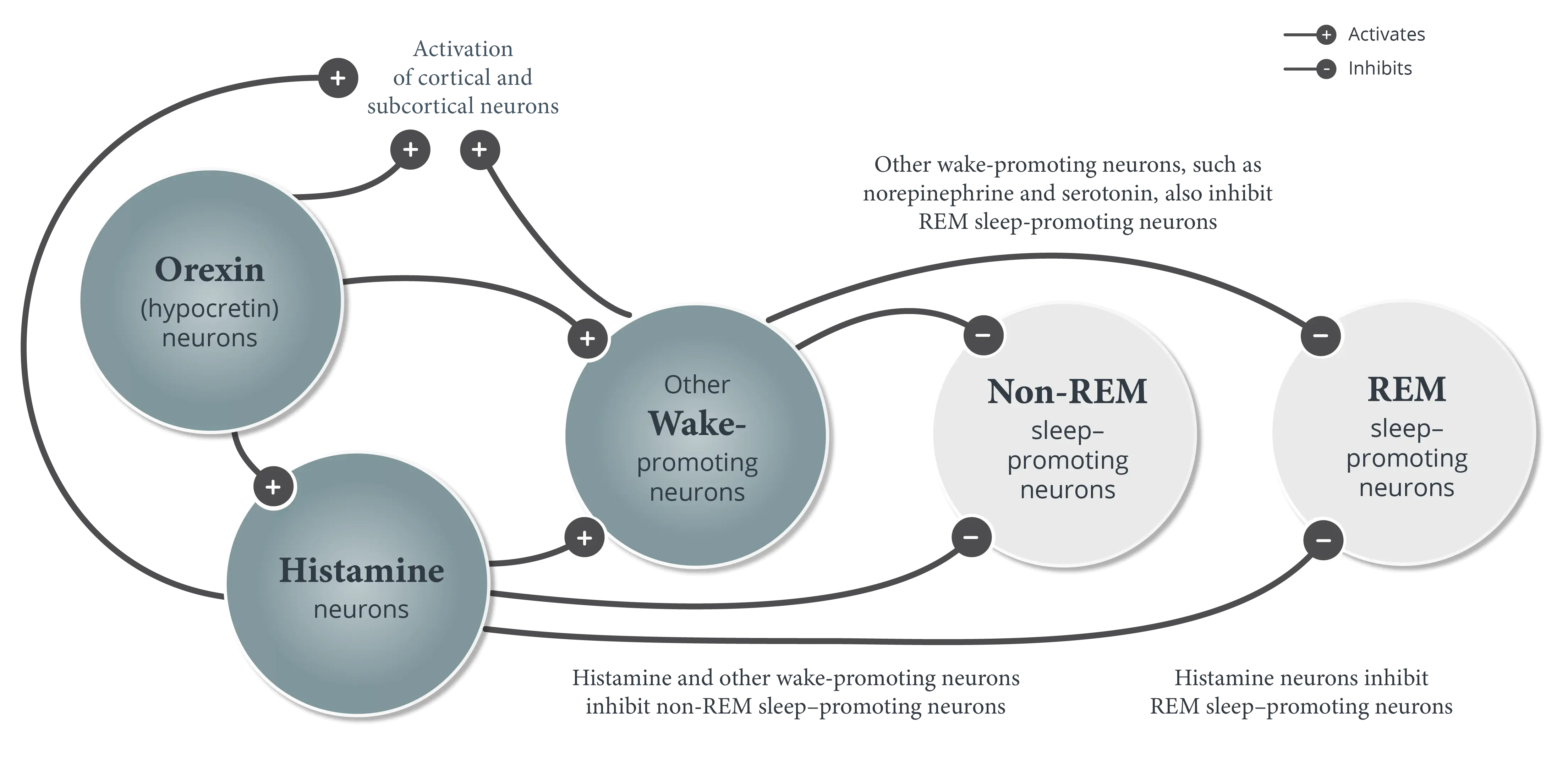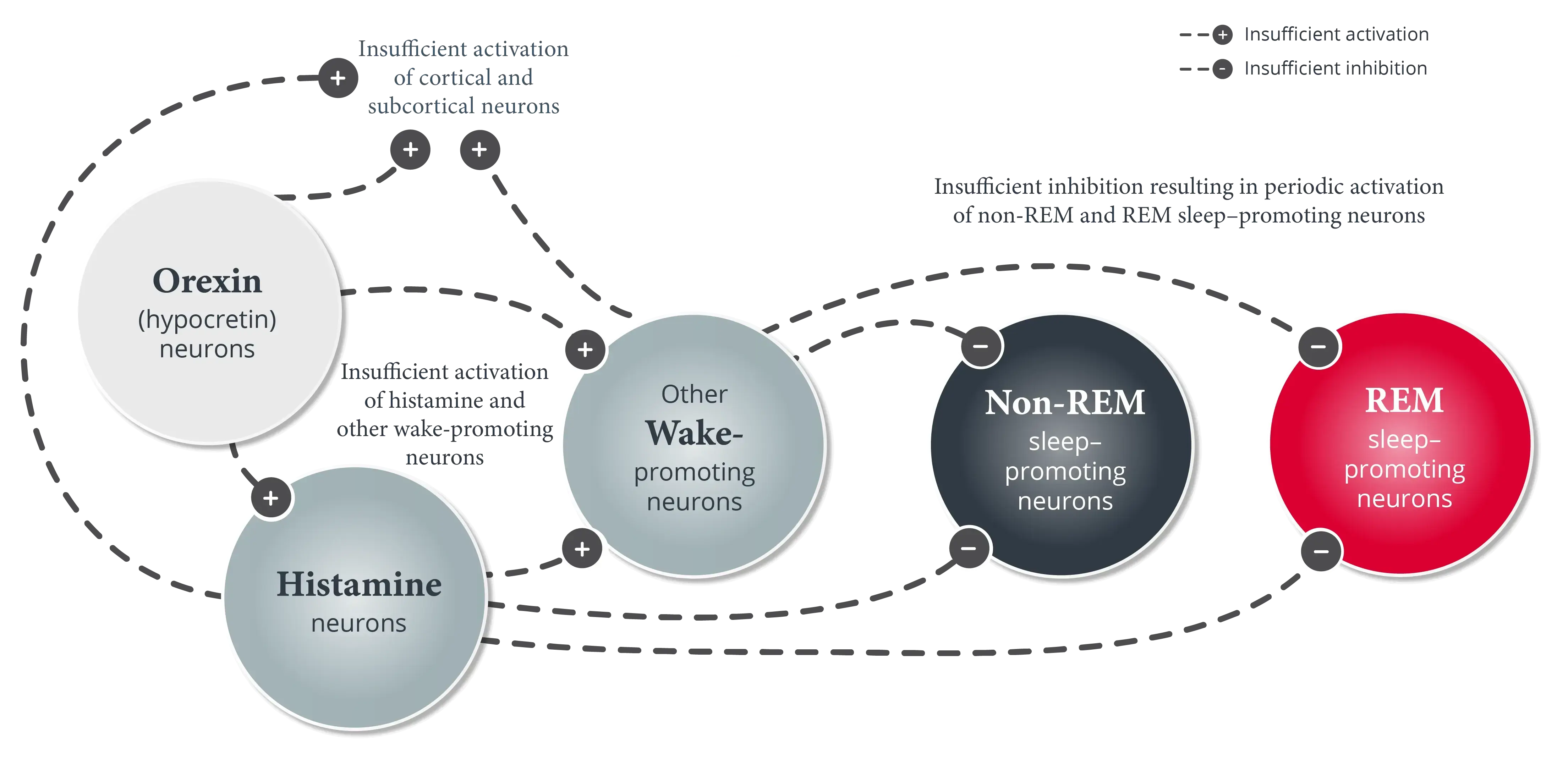

Overview of Sleep and Wakefulness
This content was developed using literature published in peer-reviewed journals from experts in sleep medicine.
Overview of Sleep and Wakefulness
This content was developed using literature published in peer-reviewed journals from experts in sleep medicine.
Overview
A normal sleep-wake cycle is characterized by consolidated wakefulness during the day and predictable, alternating periods of non-REM (rapid eye movement) and REM sleep at night.1-3
A normal sleep-wake cycle requires the coordinated timing and stability of 3 distinct states: wakefulness, non-REM sleep, and REM sleep.1,2,4-6
Normally, wakefulness is promoted during the day by multiple interconnected neuronal systems.1,4 It is characterized by high muscle tone and fast-frequency neuronal activity that is necessary for alertness and higher-order neurocognitive functioning.2,6
Non-REM sleep is a sleep state with slower-frequency neuronal activity and stages ranging from light to deep sleep. Skeletal muscle tone is lower than during wakefulness.2,6 Nighttime sleep normally begins with an episode of non-REM sleep.2
During REM sleep, which is associated with dreaming and skeletal muscle atonia, neuronal activity is faster and desynchronized, seen as distinct wave patterns (eg, sawtooth waves) on an electroencephalogram.2,3,6 Episodes of REM sleep typically occur at night after non-REM sleep and become longer over the course of the night.2
Circadian timekeeping coordinates sleep and wakefulness with the daily light/dark cycle.2


Figure modified from Plazzi G et al. Sleep Med Rev. 2008;12(2):109-128.
A normal cycle of a young adult generally consists of 7 to 8 hours of nighttime sleep, with 4 to 5 cycles of non-REM and REM sleep lasting approximately 90 to 110 minutes each.3
Learn more about the neurobiology of sleep and wakefulness.
References
- Scammell TE. The neurobiology, diagnosis, and treatment of narcolepsy. Ann Neurol. 2003;53(2):154-166.
- Scammell TE, Arrigoni E, Lipton JO. Neural circuitry of wakefulness and sleep. Neuron. 2017;93(4):747-765.
- Plazzi G, Serra L, Ferri R. Nocturnal aspects of narcolepsy with cataplexy. Sleep Med Rev. 2008;12(2):109-128.
- España RA, Scammell TE. Sleep neurobiology from a clinical perspective. Sleep. 2011;34(7):845-858.
- Schwartz JRL, Roth T. Neurophysiology of sleep and wakefulness: basic science and clinical implications. Curr Neuropharmacol. 2008;6(4):367-378.
- Brown RE, Basheer R, McKenna JT, Strecker RE, McCarley RW. Control of sleep and wakefulness. Physiol Rev. 2012;92(3):1087-1187.



